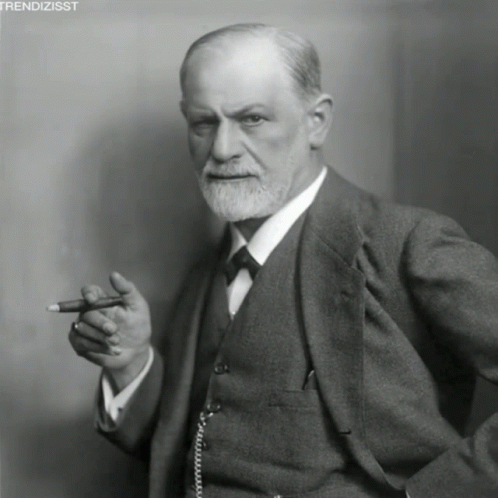Exploring the Literary Landscape of "Winesburg, Ohio" by Sherwood Anderson
8 Min Read

In the realm of American literature, few works have left an indelible mark as Sherwood Anderson's "Winesburg, Ohio."
Published in 1919, just after the cataclysmic events of World War I, this book is often heralded as a pioneering example of modernist fiction.

Anderson's innovative approach to form and content, coupled with his profound psychological insights, has cemented "Winesburg, Ohio" as a cornerstone of American literary history.

This blog explores the multifaceted aspects of Anderson's masterpiece, exploring its unique structure, thematic depth, stylistic nuances, and enduring influence on subsequent generations of writers.
A Unique Narrative Structure
"Winesburg, Ohio" defies conventional categorization, existing in a liminal space between a novel and a short story collection.

It is best described as a story cycle—a series of interconnected stories featuring recurring characters and themes. This innovative structure allows Anderson to paint a comprehensive portrait of a small Midwestern town and its inhabitants, each story adding a layer to the collective narrative.

The Story Cycle
The term "story cycle" aptly captures the essence of Anderson's work. Unlike traditional novels with a linear plot or short story collections with entirely separate tales, "Winesburg, Ohio" weaves its stories together through shared characters and themes.

The central figure is George Willard, a young reporter who serves as a conduit for the town's various stories. George's interactions with the townspeople provide a cohesive thread, yet each story stands alone, offering a unique perspective on life in Winesburg.
Anderson's Experimentation with Form
Sherwood Anderson was not merely telling stories; he was experimenting with how stories could be told.

His decision to compile these seemingly disparate narratives into a single volume was revolutionary. By doing so, he challenged readers to see the interconnectedness of individual lives and the shared human experiences that bind us together. This approach paved the way for future writers to explore non-linear storytelling and fragmented narrative structures.

The Setting: A Fictional Yet Familiar Town
"Winesburg, Ohio" is set in the titular town, but this location is a fictional stand-in for Anderson's hometown of Clyde, Ohio.

This blending of real and imagined geographies adds a layer of authenticity to the stories while allowing Anderson the creative freedom to mold his setting to fit his narrative needs.
A Study of Small-Town Life
The book provides a meticulous study of small-town life in early 20th-century America. Through its detailed and compassionate portrayal of Winesburg's inhabitants, Anderson captures the essence of a community shaped by its social dynamics, economic conditions, and cultural norms.

The town becomes a microcosm of broader American society, reflecting the complexities and contradictions inherent in the human experience.
The Role of Symbolism
While grounded in realism, "Winesburg, Ohio" is imbued with rich symbolism. Anderson uses symbols to convey deeper meanings and to illuminate the inner lives of his characters.

For example, the recurring motif of hands in various stories symbolizes the characters' desires, frustrations, and attempts at connection. This symbolic approach allows Anderson to explore themes of isolation, longing, and the search for identity in a nuanced and evocative manner.
Character Portraits: Complexity and Compassion
At the heart of "Winesburg, Ohio" are its characters—an array of individuals each grappling with their own struggles and aspirations.

Anderson's portrayal of these characters is marked by a profound empathy and psychological depth, reflecting his engagement with contemporary psychological theories.
Influences of Freud and Jung
Anderson was well-versed in the works of Sigmund Freud and Carl Jung, and their influence is evident in his characterizations.

He delves into the subconscious motivations and hidden desires of his characters, revealing the complexities of human identity. This psychological rigor sets "Winesburg, Ohio" apart from earlier works of American fiction and aligns it with the modernist movement's focus on exploring the intricacies of the human mind.
George Willard: The Observer and Protagonist
George Willard serves as both the observer and the protagonist in "Winesburg, Ohio." Through his eyes, readers gain insight into the lives of the town's residents.

George's own coming-of-age journey mirrors the broader themes of self-discovery and personal growth that permeate the book. His eventual decision to leave Winesburg represents a universal desire to seek out one's destiny beyond the confines of familiar surroundings.
The Grotesques: Marginalized and Misunderstood
Many of Anderson's characters are what he termed "grotesques"—individuals who are marginalized and misunderstood by their community. These characters often live on the outskirts of town, both literally and metaphorically.

Their stories highlight themes of alienation and the struggle for acceptance. Anderson's sympathetic portrayal of these figures underscores his belief in the inherent dignity and complexity of every human being, regardless of their societal status.
Stylistic Innovations
Sherwood Anderson's writing style in "Winesburg, Ohio" is characterized by its simplicity, economy of language, and symbolic richness.

These stylistic choices not only enhance the emotional impact of the stories but also influenced a generation of writers who followed in his footsteps.
Sparsity and Precision
Anderson's prose is notably sparse and precise. He eschews elaborate descriptions and verbose language in favor of concise, impactful sentences.

This economy of language allows him to convey deep emotional truths with remarkable clarity. Anderson's style is particularly evident in his use of dialogue, where the subtext often speaks louder than the words themselves.
Symbolic Resonance
Symbolism is a cornerstone of Anderson's storytelling. He employs symbols to convey complex ideas and emotions in a subtle yet powerful manner.

For instance, in the story "Hands," the protagonist Wing Biddlebaum's hands become a symbol of his repressed desires and the societal constraints that stifle his expression. Anderson's skillful use of symbolism adds layers of meaning to the text and invites readers to engage in deeper interpretation.
Influence on Later Writers
The stylistic innovations of "Winesburg, Ohio" had a profound impact on American literature. Writers such as Ernest Hemingway, William Faulkner, and F. Scott Fitzgerald drew inspiration from Anderson's approach. Hemingway's terse prose, Faulkner's exploration of Southern life, and Fitzgerald's focus on the complexities of human relationships all bear traces of Anderson's influence.

Moreover, Anderson's encouragement of Faulkner to return to his Southern roots and write about his own "native postage stamp of soil" played a pivotal role in the development of Faulkner's literary career.
Thematic Depth
"Winesburg, Ohio" explores a wide array of themes, many of which were groundbreaking for its time. These themes include the search for identity, the nature of human connection, and the pervasive sense of isolation that characterizes modern life.

The Search for Identity
Many characters in "Winesburg, Ohio" are engaged in a quest for self-understanding and identity. George Willard's journey from adolescence to adulthood encapsulates this theme, as he navigates his relationships with others and his own aspirations.

The stories collectively highlight the difficulties of self-discovery in a world where societal expectations often conflict with individual desires.
Isolation and Alienation
Isolation is a recurring theme in the book. Despite living in a close-knit community, many of the characters experience profound loneliness and alienation.

Anderson delves into the reasons behind this isolation, whether it is due to societal rejection, personal insecurities, or unfulfilled desires. The poignant portrayal of these isolated individuals evokes a sense of empathy and underscores the universal human need for connection.
The Nature of Human Connection
While "Winesburg, Ohio" often depicts the barriers to human connection, it also celebrates the moments of genuine interaction and understanding between characters.

These fleeting connections provide solace and hope amidst the pervasive sense of isolation. Anderson's exploration of the complexities of human relationships remains relevant today, resonating with readers who grapple with similar challenges in their own lives.
The Legacy of "Winesburg, Ohio"
The impact of "Winesburg, Ohio" extends far beyond its initial publication. It has left an enduring legacy on American literature and continues to be studied and appreciated for its artistic achievements and thematic profundity.

A Touchstone for Modernist Fiction
"Winesburg, Ohio" is often cited as a seminal work of modernist fiction. Its innovative structure, psychological depth, and stylistic precision set it apart from earlier literary traditions and paved the way for subsequent modernist writers. Anderson's willingness to experiment with form and content inspired others to push the boundaries of narrative and explore new ways of telling stories.

Influence on Appalachian Literature
Later in life, Sherwood Anderson settled in Marion, Virginia, where he became an honorary Appalachian citizen. His presence and literary contributions helped legitimize the burgeoning Appalachian literary movement.

Anderson's works set in Appalachia, along with his support for local writers, played a significant role in fostering a regional literary identity. Today, he is often regarded as a foundational figure in Appalachian literature.
Conclusion
"Winesburg, Ohio" by Sherwood Anderson is a landmark in American literature. Its innovative structure, psychological depth, and stylistic precision have left an indelible mark on the literary landscape.
Through its exploration of the human condition, the book continues to captivate and inspire readers. As a touchstone of modernist fiction, "Winesburg, Ohio" remains a testament to Anderson's artistic vision and his profound understanding of the complexities of human life. For those seeking to delve into the intricacies of small-town America and the depths of the human psyche, "Winesburg, Ohio" offers a timeless and enriching literary experience.
